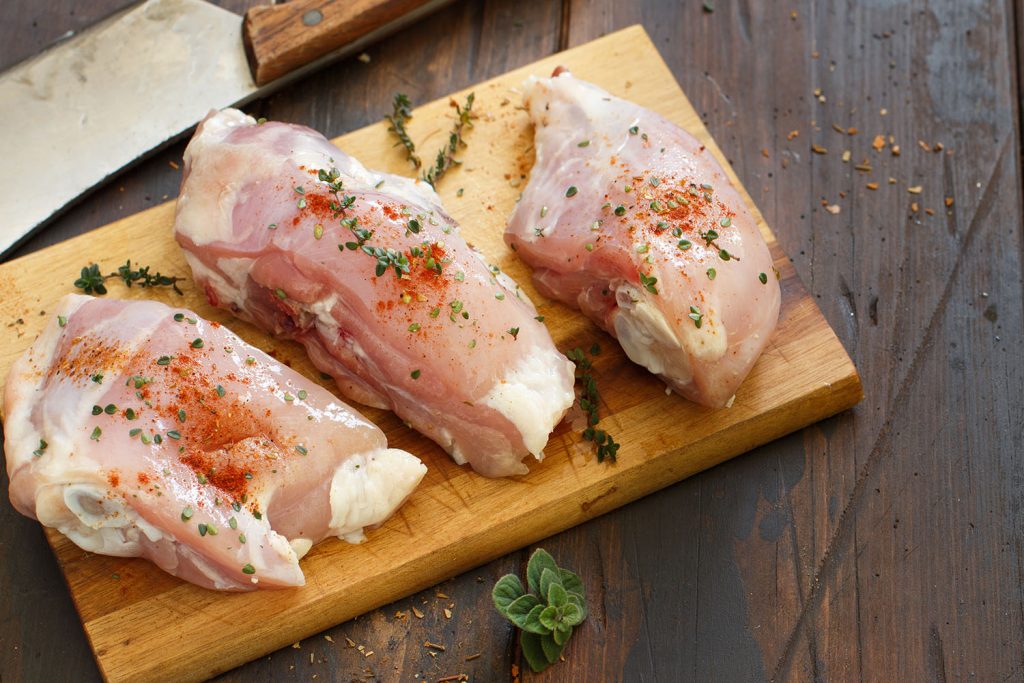06 Dec Lipid oxidation in chicken meat

Chicken meat is highly appreciated for its nutritional properties: it has a lower fat content (3-5%) than that of other types of meat and its fat includes a higher percentage of polyunsaturated fatty acids (PUFA), which are beneficial for brain, heart, and metabolic health.
However, it is precisely its high content of polyunsaturated fatty acids that makes chicken meat especially susceptible to oxidation, making lipid oxidation the main non-microbial reason for quality degradation during storage.
Lipid oxidation worsens meat color, texture, and nutritional value. The free radicals generated during lipid oxidation trigger oxidative stress in human beings, which is directly or indirectly involved in many human diseases. Fat oxidation also leads to rancidity, worsening taste and aroma, and ultimately causing off-flavors and customer rejection.
Oxidative stability of lipids is determined by a series of pre-slaughter factors related to oxidative stress in the chickens (breed of the birds, feed quality, toxins present in feed, intake of vitamins and antioxidants, stressful practices and conditions, degree of muscle damages), early post-slaughter factors (pH, carcass temperature), and meat processing and storage conditions (temperature, presence of oxygen, light, etc).
At the metabolic level, lipid oxidation depends on the content of pro-oxidants and antioxidants naturally present in the meat, on the polyunsaturation degree of fatty acids and on the presence of other fats such as cholesterol. Meat includes a series of compounds that naturally initiate fat oxidation, the most important of which is free iron. Meat also contains a series of endogenous antioxidants that counteract the oxidation process. Cooked meats are more susceptible to lipid oxidation than raw meats because the high temperatures used during cooking release iron from iron-containing proteins and inactivate certain antioxidant protective compounds.
Malondialdehyde (MDA) is a stable secondary product of PUFA oxidation. Its content in meat can be determined through the TBARS test (Thiobarbituric Acid Reactive Substances), and it is used in the industry to assess the level of lipid oxidation in the meats and meat products.
Antioxidant supplementation, effective to counteract lipid oxidation in meats
Supplementing the broiler diet with antioxidants is an easy and convenient method to prevent lipid oxidation. Exogenous antioxidants reduce oxidative stress throughout the life of the animal, therefore reducing the risk of muscle oxidation. Furthermore, fat-soluble exogenous antioxidants arrive to the membrane phospholipid layer of the muscle cells, where they protect lipids from oxidation.
Synthetic antioxidants such as butylated hydroxytoluene (BHT) or butylated hydroxyanisole (BHA) have been widely used until recent years, but are being progressively replaced by natural antioxidants due to their potential carcinogenic effect.
Essential oils are rich in constituents with high antioxidant activity and have been proven to reduce lipid oxidation in meats. In multiple field trials, PhytoShield©, our liquid antioxidant rich in essential oils, has shown to reduce the concentration of MDA in chicken tights and breast, while increasing meat taste and acceptance.
Products of choice
PhytoShield© is an oral emulsion that contains essential oils, electrolytes and vitamins intended to promote growth, reduce oxidative stress, increase meat and egg quality, and keep the animals hydrated.
Do not miss any of our articles!
Subscribe to our monthly newsletter

Certain health statements may not be applicable in your region.

